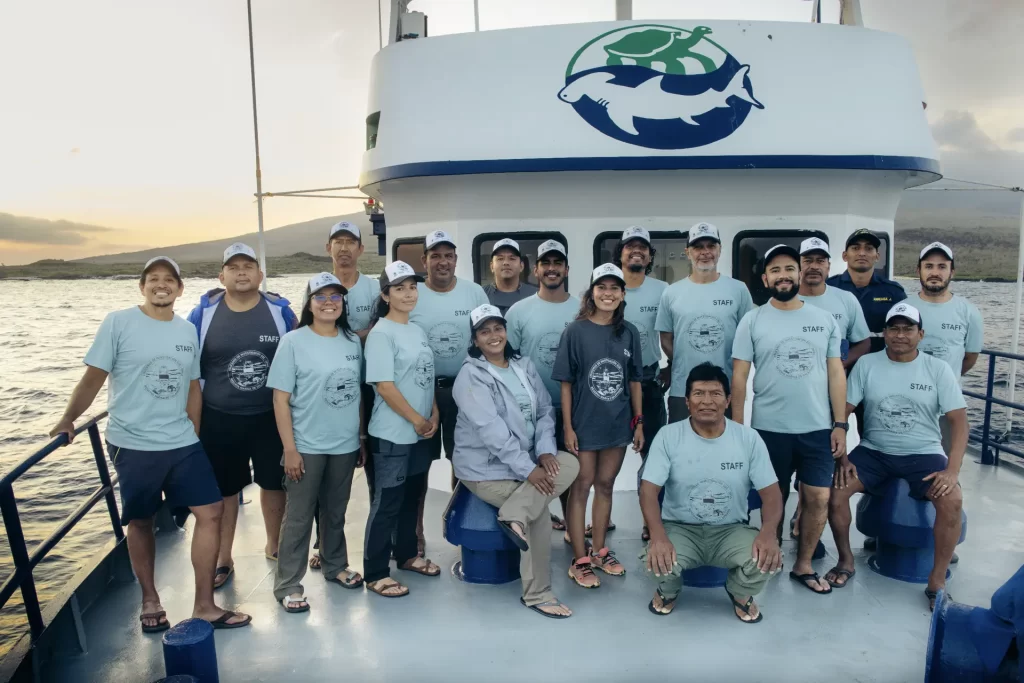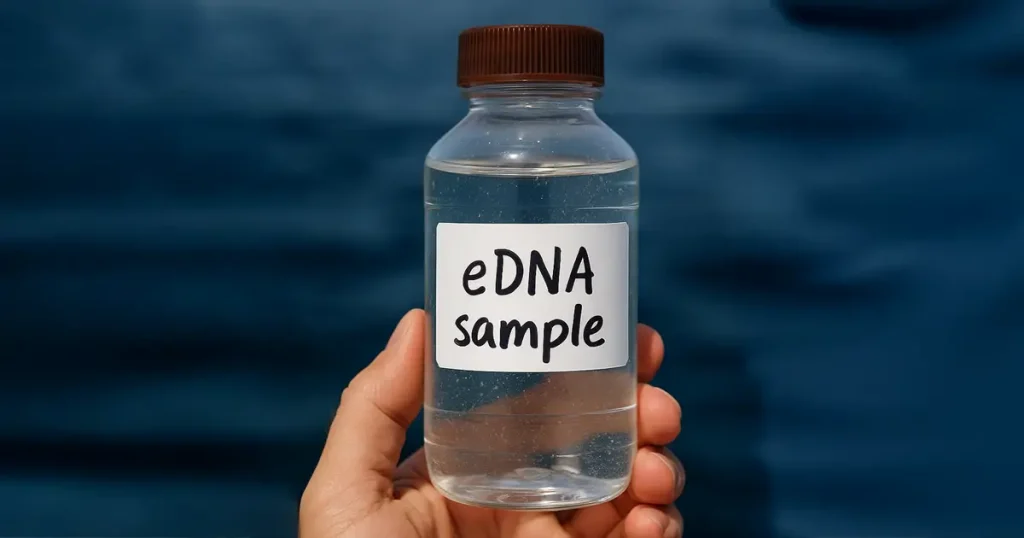The 2024 Galápagos Pinnipeds Research and Monitoring Expedition
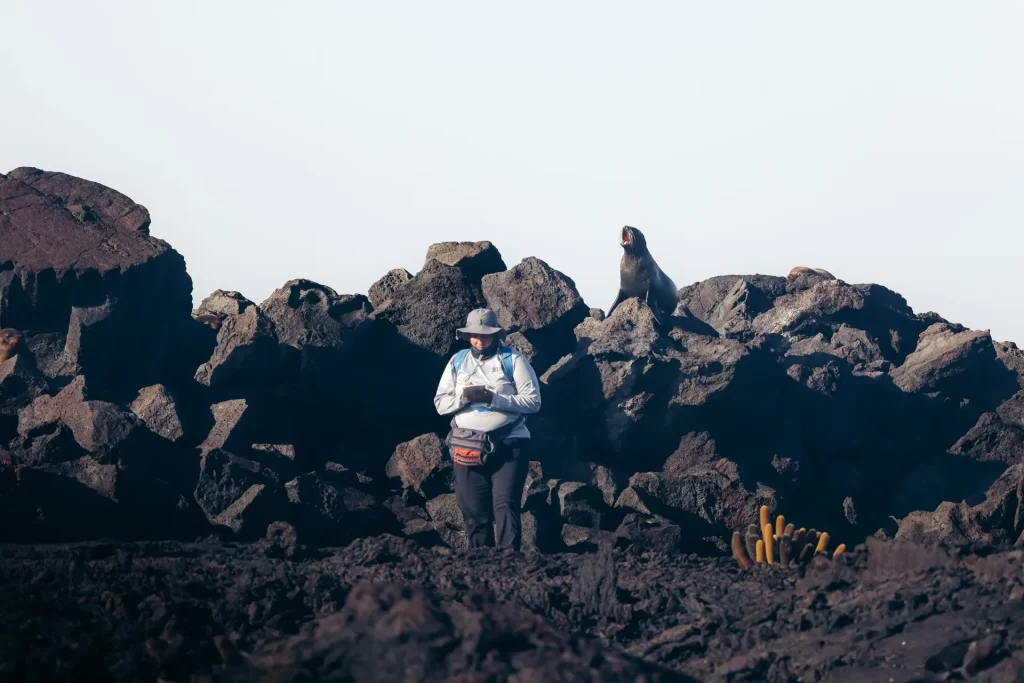
At Galápagos Conservancy, the imperative to conserve the species and ecosystems of Galápagos for the long term drives our support of projects that generate critical scientific knowledge to help managers make informed decisions. As part of this enduring commitment to conservation efforts, we are supporting ongoing research on the pinnipeds of Galápagos – its sea lions and fur seals. Researchers Drs. Diego Páez and Marjorie Riofrío of the Universidad San Francisco de Quito are assessing these species’ population status throughout the archipelago as well as the status of their marine ecosystem’s health in the face of climate change. This research is funded through our conservation grants program.
Annual Pinniped Research and Monitoring Expeditions
An annual scientific research and monitoring cruise is the main component of the pinniped’s investigation. It is organized by the Galápagos National Park Directorate, the Universidad San Francisco de Quito, and the Agency for Regulation and Control of Biosecurity and Quarantine for Galápagos. This year’s expedition took place over two weeks in March and April, supported by the Galápagos Conservancy and the Charles Darwin Foundation.
Technicians and scientists embarked on the ship Sierra Negra, a vessel owned by the Galápagos National Park Directorate. During this expedition, Dr. Riofrío visited 14 islands in the archipelago and estimated pinniped populations at 30 different sites.
The team surveyed populations of sea lions and fur seals in their reproductive colonies to understand their current status and evaluate population trends and growth rates. At each site, animals were captured to collect biological samples such as blood, hair, whiskers, skin, and nasal and rectal swabs. These samples were analyzed to assess the species’ health status and investigate potential changes in their diet related to environmental variability.
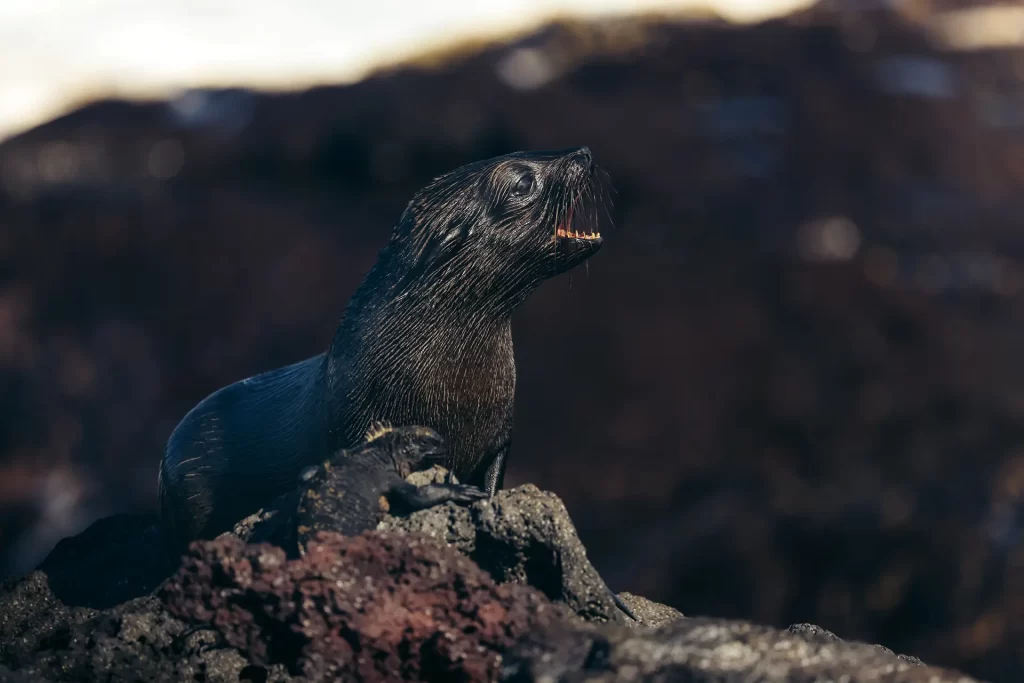
Riofrío indicated that fewer animals were recorded this year, perhaps due to the expedition’s timing, which occurred during the warm season rather than the reproductive peak of these species. Additionally, she raised the possibility that El Niño events may negatively impact these populations. “This emphasizes the importance of closely monitoring Galápagos pinniped populations and understanding the climatic factors affecting their survival,” she noted.
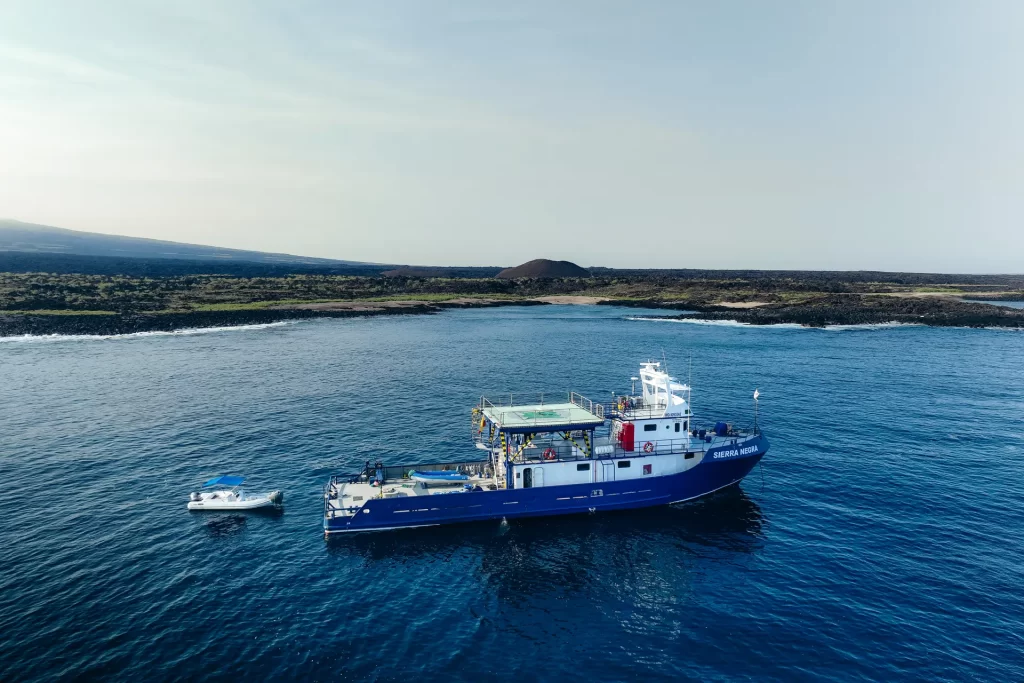
Ecological Importance of Pinnipeds in Galápagos
In the Galápagos archipelago, sea lions and fur seals serve as important sentinels of the sea. Their presence and behavior provide invaluable insights into the health and vitality of the ocean surrounding these unique islands. These top predators that consume many fish and other marine organisms may help maintain the food chain’s functionality. Furthermore, their interactions with the marine environment can reveal environmental changes and alert us to potential threats to marine biodiversity. Therefore, protecting sea lions is not only crucial for their survival but also for the overall health of the marine ecosystem in the Galapagos.
Impact of Your Support
The research and conservation efforts that we undertake are made possible through the generous support of our donors like you, who are committed to conserving the Galápagos ecosystems. We are grateful for your support and dedication to preserving the natural beauty of this unique place. As Dr. Jorge Carrión, our Conservation Director, emphasizes, “Scientific research is fundamental for making sound conservation decisions. Only through a deep understanding of ecosystem dynamics and the status of Galápagos’ iconic species can we implement effective strategies for their long-term protection.”
